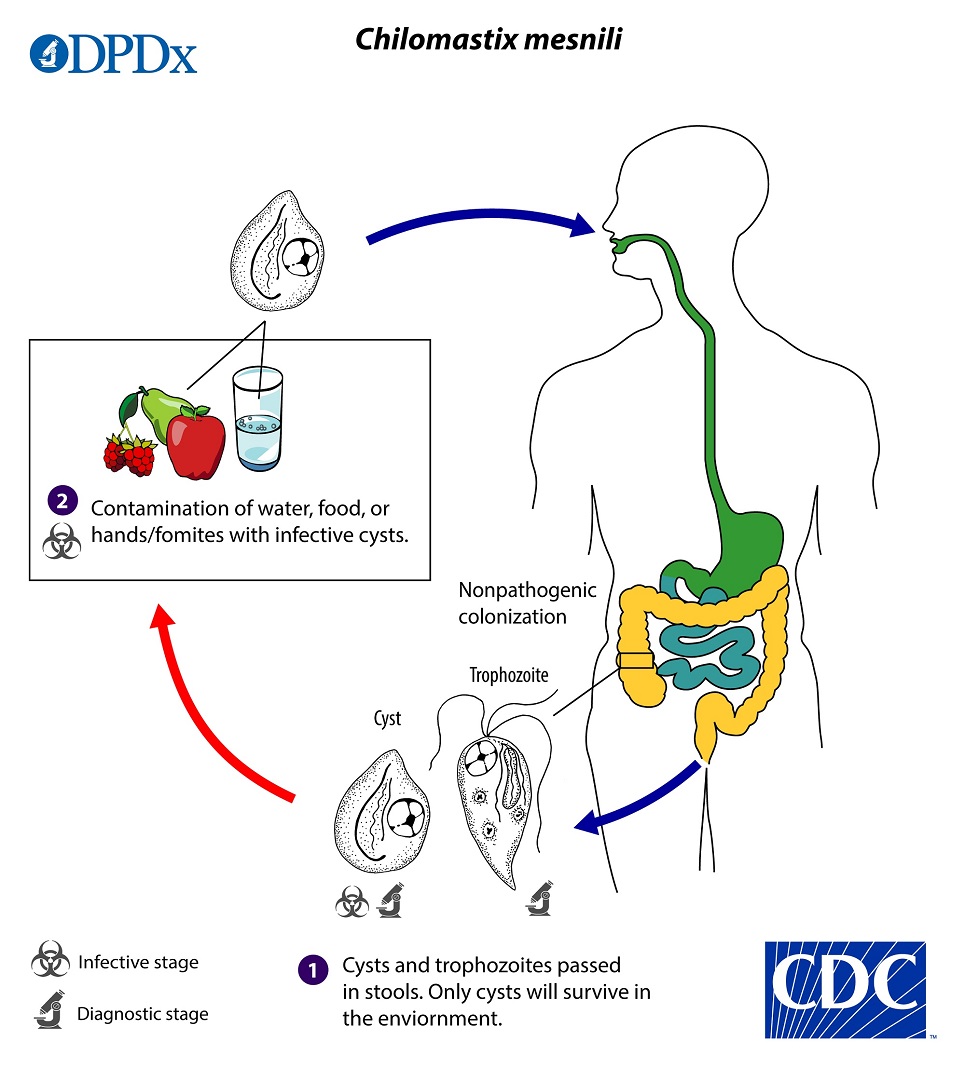
Chilomastix mesnili
[Chilomastix mesnili]
Causal Agents
Chilomastix mesnili is a nonpathogenic flagellate that is often described as a commensal organism in the human gastrointestinal tract.
Life Cycle
The cyst stage is resistant to environmental pressures and is responsible for transmission of Chilomastix. Both cysts and trophozoites can be found in the feces (diagnostic stages)  . Infection occurs by the ingestion of cysts in contaminated water, food, or by the fecal-oral route (hands or fomites)
. Infection occurs by the ingestion of cysts in contaminated water, food, or by the fecal-oral route (hands or fomites)  . In the large (and possibly small) intestine, excystation releases trophozoites. Chilomastix resides in the cecum and/or colon; it is generally considered a commensal whose contribution to pathogenesis is uncertain.
. In the large (and possibly small) intestine, excystation releases trophozoites. Chilomastix resides in the cecum and/or colon; it is generally considered a commensal whose contribution to pathogenesis is uncertain.
Geographic Distribution
Worldwide. It is more prevalent in areas with inadequate sanitation.
Clinical Presentation
Chilomastix mesnili is considered nonpathogenic. The presence of cysts and/or trophozoites in stool specimens can however be an indicator of fecal contamination of a food or water source, and thus does not rule out other parasitic infections.
Chilomastix mesnili trophozoites, trichrome stain.
Chilomastix mesnili is a flagellated protozoan generally regarded as nonpathogenic in the human host. Trophozoites are pear-shaped and usually measure 6–24 µm in length. The anterior end is rounded and contains a single nucleus with an eccentric karyosome. The posterior end tapers off to a point.











Laboratory Diagnosis
Chilomastix mesnili is identified through the detection of cysts and/or trophozoites in stool specimens, both concentrated wet mounts and permanent stained smears (e.g., trichrome).
Laboratory Safety
Standard precautions for the processing of stool samples apply. While Chilomastix mesnili is non-pathogenic, care should be taken to avoid other enteric pathogens potentially in unfixed stools.
Treatment Information
For information about treatment please contact CDC-INFO.
DPDx is an educational resource designed for health professionals and laboratory scientists. For an overview including prevention, control, and treatment visit www.cdc.gov/parasites/.
